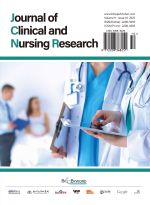The Role of Stress-Related Inflammatory Mediators in Hepatocyte Injury in Fatty Liver Disease and Current Research Status
Abstract
Non-alcoholic fatty liver disease (NAFLD) has become the most prevalent chronic liver disease globally, with its incidence rising annually. It can progress to cirrhosis and even hepatocellular carcinoma, posing a serious threat to human health. Stress can participate in the pathological process of NAFLD by activating inflammatory responses and regulating levels of inflammatory mediators, with hepatocyte injury being a core component of NAFLD progression. This paper focuses on three key stress-related inflammatory mediators: tumor necrosis factor-α (TNF-α), interleukin-6 (IL-6), and C-reactive protein (CRP), elucidating their core mechanisms in the pathway related to stress signal, followed by inflammatory activation and hepatocyte injury respectively, and reviewing current research. Research indicates that certain inflammatory mediators can damage hepatocytes by directly inducing apoptosis or indirectly regulating metabolic disorders and fibrosis progression. However, questions regarding causal relationships, target specificity for intervention, and quantification of psychological stress remain unresolved. This paper aims to provide theoretical support for NAFLD intervention strategies targeting inflammatory mediators, clarifying future research directions to advance clinical translation.
References
Cao F, Hu F, Zhou Y, 2025, Molecular Mechanisms and Research Progress of Traditional Chinese Medicine Improving Non-Alcoholic Fatty Liver Disease via the AMPK Pathway. Journal of Hainan Medical University, 2025: 1–16.
Liu D, Liu Y, Han S, et al., 2023, Huoshan Dendrobium Alleviates High-Fat Diet-Induced Non-Alcoholic Fatty Liver Injury. Journal of Binzhou Medical University, 46(6): 420–424.
Yang S, Lou Q, 2015, Current Status of Type 2 Diabetes Combined with Non-Alcoholic Fatty Liver Disease and Its Relationship with Sleep and Lifestyle Behaviors. Nursing and Rehabilitation, 14(9): 828–831.
Shao Z, 2023, Relationship Between Psychological Factors and Non-Alcoholic Fatty Liver Disease. Hepatology Doctor, 2023(6): 49–50.
Jin W, Han H, Yang J, et al., 2025, Application Value of Liver Steatosis Analysis Parameters in Metabolic-Associated Fatty Liver Disease. Biomedical Engineering and Clinical, 2015: 1–6.
Wen Y, 2018, Relationship Between Sociopsychological Factors and Non-Alcoholic Fatty Liver Disease. Chinese Journal of Health Psychology, 26(4): 565–568.
Luo Y, Qu F, Ye H, et al., 2025, Application Value of Combined Detection of IL-6, TNF-α, and Alpha-Fetoprotein in Diagnosis and Progression Prediction of Hepatocellular Carcinoma. Life Science Instruments, 23(4): 18–20.
Li Y, Li H, 2025, Efficacy of Metformin Combined with Liraglutide in Type 2 Diabetes and Its Effects on TNF-α and IL-6 Levels. Journal of Beihua University (Natural Science Edition), 26(4): 506–509.
Wang H, Luo J, Wang C, et al., 2021, Long Non-Coding RNA GIMA Promotes Survival of Hepatocellular Carcinoma Cells under Metabolic Stress by Inhibiting ATF4 (English). Journal of University of Science and Technology of China, 51(2): 117–128.
Liu H, Huang Y, Liu L, 2023, Knockdown of Sequence-Similar Family 172 Member A Inhibits Proliferation and Glycolysis in Hepatocellular Carcinoma Cells. Acta Biochemica et Molecularis Sinica, 39(6): 831–839.
Deng X, Lü X, Xu W, et al., 2023, Role of the Eph Receptor-Interacting Protein B2-Hepatocyte Kinase B4 Signaling Pathway in Orthodontic Tooth Movement-Induced Lateral Periodontal Remodeling. Journal of Practical Hospital Clinical Medicine, 20(1): 12–16.
Ji S, Li M, Wen Y, et al., 2022, Effects of HGF Overexpression on Pulmonary Function and Pulmonary Arterial Pressure in COPD Mice and Its Mechanism of Action. Journal of Clinical Pulmonology, 27(1): 5–11.
Feng X, Zhang L, Xiao L, et al., 2025, Correlation between Arteriosclerosis Index and Non-Alcoholic Fatty Liver Disease. Journal of Nanjing Medical University (Natural Science Edition), 45(9):1326–1333.
Zhang M, Chen Y, Zhu L, et al., 2025, Exploring the Traditional Chinese Medicine Mechanism of Circadian Rhythm Disorder-Induced Non-Alcoholic Simple Fatty Liver Disease from the Perspective of “Liver and Anger”. Fujian Journal of Chinese Medicine, 2025: 1–8.
Guo Z, Lu C, Huang Y, et al., 2025, Analysis of the Interaction Between Non-Alcoholic Fatty Liver Disease and Emotional Factors on Heart Failure Risk in Individuals with Normal BMI. Journal of Central South Medical Sciences, 53(5): 798–801.
Tan J, Guo M, Zhang X, et al., 2025, Network Pharmacology-Based Investigation of Mulberry Leaf’s Protective Effects Against Non-Alcoholic Fatty Liver Disease. Journal of Liaoning University of Traditional Chinese Medicine, 2025: 1–16.
Wang X, Li Z, Luo M, et al., 2025, Classification, Therapeutic Effects, and Mechanisms of Flavonoids with Potential Therapeutic Effects on Non-Alcoholic Fatty Liver Disease (NAFLD). Journal of Chinese Pharmaceutical Sciences, 2025: 1–39.
Yang Q, Lin H, Wen Y, et al., 2025, Mechanism Study of Jianspleen and Clear-turbidity Decoction Treating Non-Alcoholic Fatty Liver Disease by Regulating Ferroptosis Signaling: A Network Pharmacology and High-Throughput Sequencing Approach. Journal of Hainan Medical University, 2025: 1–23.
Cao F, Hu F, Zhou Y, 2025, Molecular Mechanisms and Research Progress of Traditional Chinese Medicine Improving Non-Alcoholic Fatty Liver Disease via AMPK Pathway. Journal of Hainan Medical University, 2025: 1–16.
Liu C, Zheng N, Xu J, et al., 2025, Research Progress on Traditional Chinese Medicine Treatment for Non-Alcoholic Fatty Liver Disease Based on the NF-κB Signaling Pathway. World Science and Technology - Modernization of Traditional Chinese Medicine, 2025: 1–16.


